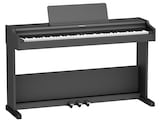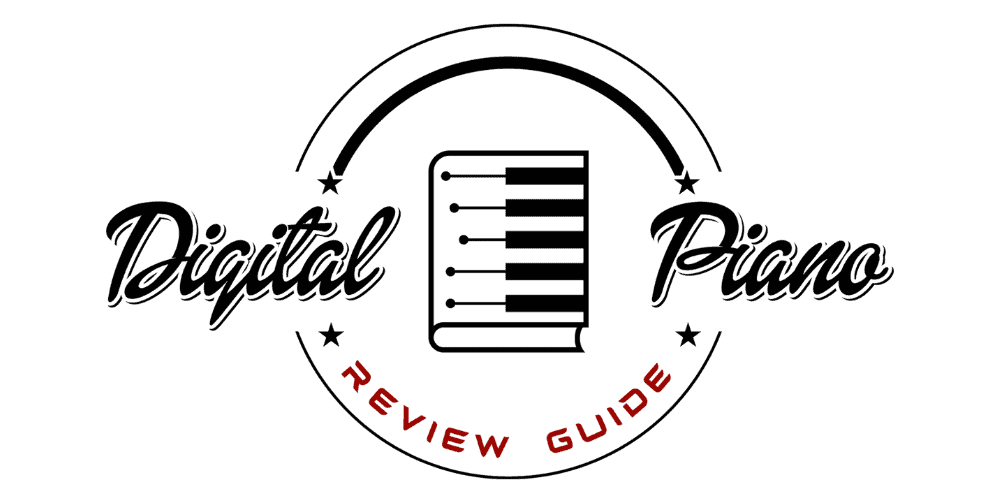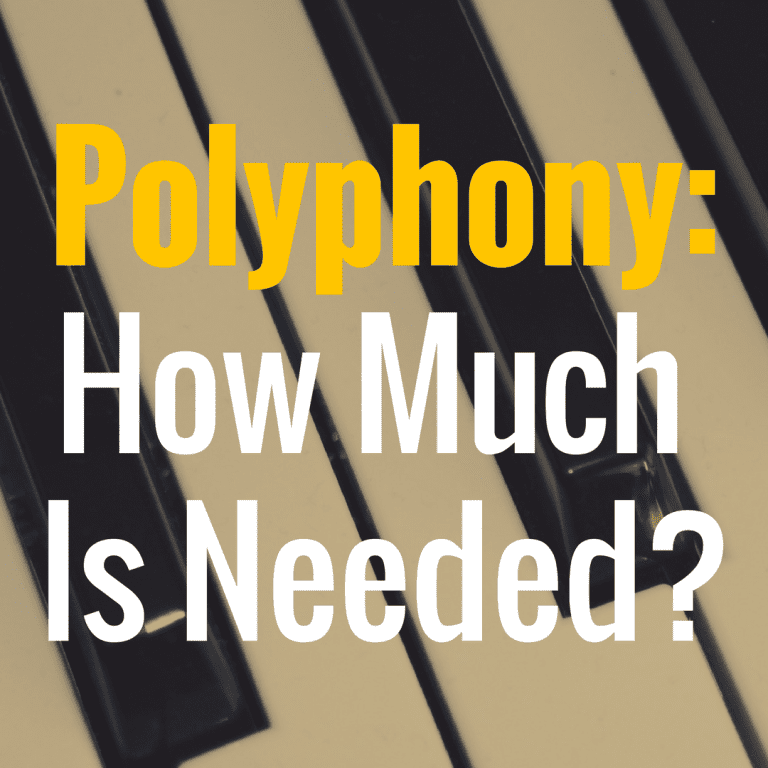Yamaha YDP-165 vs Kawai KDP-120 – Which Piano is Better?

In this article, we will compare two popular digital pianos, the Yamaha YDP-165 vs Kawai KDP 120. We will examine their similarities and differences in terms of price, portability, key action, sound, notable features, and suitability for different types of players.
| PHOTO | PIANO |
|---|---|
 | Kawai KDP120 |
 | Yamaha YDP-165 |
 | Roland RP-107 |
 | Casio PX-870 |
 | Yamaha YDP-S55 |
Yamaha YDP-165 vs Kawai KDP 120 (TLDR)

The Kawai KDP 120 is the superior choice when compared to the Yamaha YDP-165 based on three noteworthy factors:
- Authentic acoustic piano experience
- Responsive Hammer Compact II keyboard action
- Harmonic Imaging sound technology
These features allow the KDP 120 to accurately replicate the touch and tone of an acoustic piano, providing a satisfying and realistic playing experience for players of all skill levels. As you read on, we’ll explore the key differences between these digital pianos in terms of price, key action, sound quality, and unique features, helping you understand why the Kawai KDP 120 is the top choice.

| BEST SELLERS |
|---|
| 1) Casio PX-770 |
| 2) Yamaha YDP-145 |
| 3) Roland RP-701 |
| 4) Yamaha YDP-165 |
| 5) Casio PX-870 |
- You Might Also Like: Yamaha YDP-145 vs Yamaha YDP-144
Price
When deciding between the Yamaha YDP-165 and the Kawai KDP 120, the price is an important factor to consider. Budget plays a crucial role in our choices, and it’s essential to understand the value each digital piano offers for its price.
The Yamaha YDP-165 and the Kawai KDP 120 are both mid-range digital pianos that offer excellent value for the money. At the time of writing, the Yamaha YDP-165 has a price of about $1799, while the Kawai KDP 120 has price of roughly $1499.
Portability
Both the Yamaha YDP-165 and the Kawai KDP 120 are console-style digital pianos, meaning they have a fixed stand and pedals attached to them. They are not designed to be portable digital pianos (like keyboards or stage pianos a gigging musician would typically transport).
As a result, neither the Yamaha YDP-165 nor the Kawai KDP 120 is ideal for musicians or everyday pianists that need a portable piano they can transport to and from home or working gigs.
The Yamaha YDP-165 weighs around 93 pounds, while the Kawai KDP 120 weighs around 82 pounds. While not intended for easy transportation, they are suitable for home use or other situations where the piano will remain in one place. And while not as big as acoustic pianos, you probably won’t want to purchase either of these instruments if you’re seeking a piano for a small space.
Key Action

Key action is one of the most critical factors when choosing a digital piano, as it directly impacts the feel and playability of the instrument. Both the Yamaha YDP-165 and the Kawai KDP 120 have their own unique key actions that cater to different player preferences.
The Yamaha YDP-165 features Yamaha’s Graded Hammer 3 (GH3) keyboard action, which is an improvement over the Graded Hammer Standard (GHS) action found in lower-end Yamaha models.
The GH3 action is designed to replicate the touch and feel of an acoustic piano more accurately. It features a triple sensor system for improved key repetition and responsiveness, as well as synthetic ivory key tops for a more realistic touch.
On the other hand, the Kawai KDP 120 is equipped with Kawai’s Responsive Hammer Compact II (RHC II) keyboard action, which is designed to simulate the touch and feel of a grand piano. The RHC II action incorporates graded hammer weighting and a responsive triple sensor system, providing a realistic playing experience.
Additionally, the KDP 120 features Kawai’s proprietary Let-off simulation, which replicates the subtle “notch” sensation felt when playing the keys of a grand piano.
As for how both of these key actions compare, the Yamaha YDP-165’s GH3 action feels slightly heavier and more like an acoustic piano, thanks to the synthetic ivory key tops and the triple sensor system. It provides excellent control and responsiveness, especially when playing fast passages.
On the other hand, the Kawai KDP 120’s RHC II action has a slightly lighter touch, which some players may prefer. The Let-off simulation adds an extra layer of realism that many pianists appreciate.
In summary, both the Yamaha YDP-165 and the Kawai KDP 120 offer unique and realistic key actions that cater to different player preferences. The YDP-165’s GH3 action provides a slightly heavier and more authentic touch, while the KDP 120’s RHC II action is a bit lighter and includes the Let-off simulation for added realism.

| PHOTO | PIANO |
|---|---|
 | Kawai KDP120 |
 | Yamaha YDP-165 |
 | Roland RP-107 |
 | Casio PX-870 |
 | Yamaha YDP-S55 |
Sound
Sound quality is crucial when selecting a digital piano, as it affects the overall playing experience and enjoyment of the instrument. The Yamaha YDP-165 and the Kawai KDP 120 both use advanced sampling technology to provide rich and detailed piano sounds that closely mimic the sound of a real piano.
The Yamaha YDP-165 features Yamaha’s CFX Grand Piano sound, which is sampled from their flagship concert grand piano. Additionally, the YDP-165 includes the Intelligent Acoustic Control (IAC) technology, which adjusts the balance of bass and treble in response to the volume setting to ensure a clear and balanced sound at any level.
The Kawai KDP 120, on the other hand, uses Kawai’s Harmonic Imaging sound technology, which is based on samples from their renowned EX Concert Grand Piano. The KDP 120 also incorporates the Virtual Technician feature, allowing you to customize the piano’s sound to your liking by adjusting various parameters such as voicing, damper resonance, and touch curve.
Both digital pianos offer realistic and expressive piano sounds, and the choice between them may come down to personal preference and the specific tonal characteristics you prefer.
Notable Features
In addition to the key action and sound, there are other notable features that distinguish the Yamaha YDP-165 and the Kawai KDP 120.
The Yamaha YDP-165 includes:
- A built-in 2-track song recorder for capturing your performances and practice sessions.
- 50 preset classical songs and the ability to add more via the Smart Pianist app.
- Stereophonic Optimizer technology, which enhances the sound when playing with headphones.
- USB to Host connectivity for easy integration with computers and mobile devices.
The Kawai KDP 120 includes:
- A built-in piano lesson course
- A built-in metronome and 4-hands mode, which enables two players to play simultaneously on the same instrument.
- Bluetooth MIDI connectivity for wireless integration with computers and mobile devices.
- A built-in sliding key cover for protection and a more elegant appearance.
Ideal Piano for Certain Players
Both the Yamaha YDP-165 and the Kawai KDP 120 cater to a wide range of players, from beginners to more advanced pianists. However, there are some differences between the two models that may influence a player’s decision, depending on their skill level and playing needs.
The Yamaha YDP-165 comes with a host of features that make it an excellent choice for students and intermediate players, such as the built-in metronome, dual headphone jacks for silent practice, and the ability to split and layer voices. Additionally, the YDP-165 is compatible with Yamaha’s Smart Pianist app, which offers interactive learning tools, sheet music display, and other useful functions to help players develop their skills.
In contrast, the Kawai KDP 120 is a more straightforward instrument, focusing on delivering an authentic piano experience. While it may not have as many features as the YDP-165, its simplicity can be an advantage for those who want to focus on playing without distractions. The KDP 120 also includes a built-in lesson function and a metronome, making it suitable for beginners and intermediate players alike.
For beginners and intermediate players who are looking for a digital piano with more features, the Yamaha YDP-165 is often their top choice. Its compatibility with the Smart Pianist app and various functions make it a versatile option for learning and practice.
On the other hand, those who have prior experience with acoustic pianos or who want a more focused playing experience, might prefer the Kawai KDP 120. Its simpler design and emphasis on delivering an authentic piano sound and feel make it an attractive option for players who want a no-frills instrument.
Both the Yamaha YDP-165 and the Kawai KDP 120 cater to a variety of players, from beginners to more advanced pianists. The YDP-165 offers more features and interactive learning tools, while the KDP 120 focuses on providing an authentic piano experience with a simpler design. It’s essential to try both digital pianos and evaluate their features and playability to find the best fit for your playing needs and preferences.
Yamaha YDP-165 vs Kawai KDP 120: Better Piano?
After a thorough comparison of the Yamaha YDP-165 and Kawai KDP 120, my recommendation is to go for the Kawai KDP 120 for its authentic acoustic piano experience. While the Yamaha YDP-165 does offer additional features that may seem appealing, I believe that the Kawai KDP 120 provides the essential elements a player needs without unnecessary extras, making it a better value for money.
The Kawai KDP 120 focuses on delivering a high-quality piano experience, with its Responsive Hammer Compact II keyboard action and Harmonic Imaging sound technology. These features ensure that the KDP 120 accurately replicates the touch and tone of an acoustic piano, providing a satisfying and realistic playing experience.
This focus on authenticity is a significant advantage for those who want to develop proper piano playing techniques, as well as for experienced players seeking a genuine piano feel in a digital instrument.
So if you’re looking for a digital piano that delivers an authentic acoustic piano experience without unnecessary bells and whistles, the Kawai KDP 120 is the better choice. Its focus on replicating the feel and sound of a traditional piano makes it an excellent investment for players of all skill levels.
While the Yamaha YDP-165 may have additional features, they may not be worth the extra cost for players who prioritize authenticity and simplicity in their digital piano.
- If this article helped you, please “like” our Digital Piano Review Guide Facebook page!
You Might Also Enjoy:






